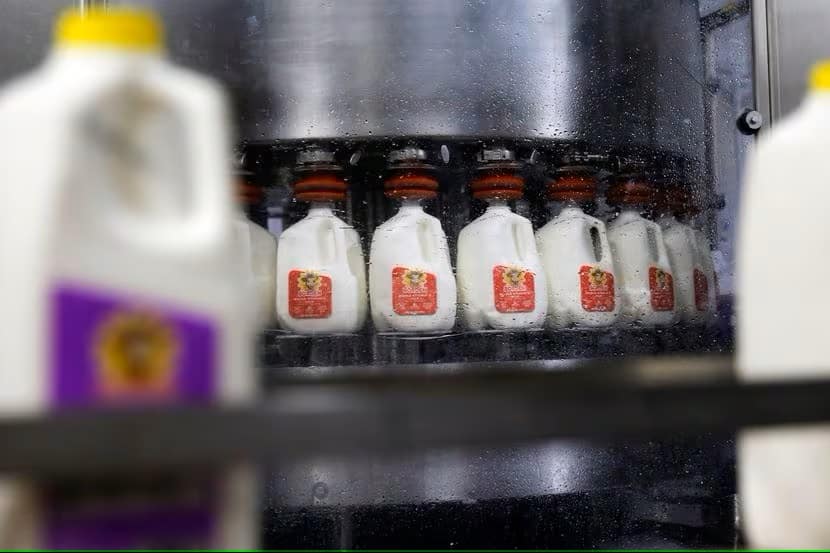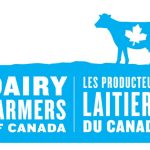
The industry has a long history of environmental stewardship, despite contributing a modest percentage of greenhouse gas emissions.
Some groups like to portray animal-sourced foods like dairy as the biggest villain on the world’s environmental stage. Only by severely restricting dairy production or eliminating dairy foods from the diet, they say, can we meet today’s climate challenge.
Not only is this black-and-white approach far too simplistic for complex global food systems, but it’s also flat-out wrong — and based on hearsay, misconceptions and misinformation.
First, according to the U.N. Food and Agriculture Organization, the dairy industry globally accounts for less than 3% of greenhouse gas emissions, nowhere near the colossal emissions offender some would have you think.
Second, the U.S. dairy industry has a long history of environmental stewardship and, despite contributing a modest percentage of greenhouse gas emissions, it is redoubling efforts to lower that percentage even more.
The North American dairy sector, where the U.S. is the primary milk producer, reduced emissions intensity by 2.2% per year from 2005 to 2015 even as milk production increased 2.1% annually. Absolute emissions decreased by 5% over that 10-year span.
According to the FAO, the U.S. has one of the highest efficiency and lowest greenhouse gas emissions per liter of milk produced, and we’ve set even tighter environmental targets for the future.
In 2020, the U.S. dairy industry established aggressive new environmental stewardship goals to achieve greenhouse gas neutrality — including methane reduction — optimize water use and improve water quality by 2050. Working with the Foundation for Food and Agriculture Research and several food company partners, we are conducting a wide-ranging set of demonstration sites on dairy farms to test new tools, practices and technologies that will decisively reduce emissions in ways that are both economically viable and practical to implement for U.S. farmers.
Other dairy projects are already delivering results. Through a combination of practices and technologies, such as adding methane-reducing ingredients to cows’ diets and turning captured methane from manure into clean biogas, California dairy farms have reduced their annual methane emissions by the equivalent of 2.2 million tons of CO2 since 2015.
U.S. dairy is leading the way across all aspects of sustainability: social, economic and environmental. When you superimpose our sustainability credentials with dairy’s outsized, positive impact on economic and human health globally, there should be no question regarding dairy’s critical role in nourishing a growing world population while caring for the planet.
The dairy sector contributes to all 17 of the U.N.’s sustainable development goals, from working toward zero hunger to taking urgent action to combat climate change. The FAO said dairy carries “particular promise” for ending poverty.
One billion people worldwide rely on the dairy sector for their livelihoods either through milk production or in industries that support dairy farming such as feed and fertilizer production. Milk and dairy products account for about 14% of global agricultural trade, supporting a multitude of rural economies. An estimated 60 to 65% of the income of marginal and small-scale farmers comes from dairying.
Then there are dairy’s nutritional benefits, which might be the most important part of the entire equation.
About 2.3 billion people in this world suffer moderate to severe food insecurity, and 3 billion people cannot afford a healthful diet. With climate change, population growth, constraints on natural resources and unexpected crises (like Russia’s invasion of Ukraine), these numbers are growing. The U.N. General Assembly in New York just last month named hunger and malnutrition an existential threat to hundreds of millions of people.
As an affordable, nutrient-dense, sustainably produced food, dairy brings particular strengths to global food systems and food security. For example, dairy foods are associated with better growth, cognitive performance and motor development in children in low-income countries.
The bottom line is that restricting or eliminating dairy from global food systems would yield minimal environmental gains at a significant expense to human health, nutrition and livelihoods. We will not deliver on the world’s nutrition security needs without dairy. More specifically, we will not deliver on the world’s nutrition security needs without U.S. dairy.
We aim to do that in two ways: knowledge sharing and trade.
The U.S. is an exemplary model for milk producers across the globe. Working together across borders, we can accelerate the implementation of proven strategies to help achieve our shared emissions reduction goals.
The U.S. dairy sector’s high efficiency and investments in innovation deliver nutrient-dense products that can be exported around the world to nourish people and support healthful diets. Open trade and science-based regulatory policies help ensure that we get food where it is most needed and do it consistently, competitively and cost-effectively.
But to be clear, we are not simply looking to sell sustainably produced, high-quality U.S. dairy products overseas. We see it as a broader mission to support the health of the planet and of people. We want to share our production practices and innovations to advance dairy’s environmental benefits globally. And we share the nutritional benefits of dairy and how dairy fits into traditional diets worldwide to support global health and increase consumption for the benefit of all dairy farmers, processors and consumers.
As leaders from around the world gather in Dubai, United Arab Emirates, for the climate change conference known as COP 28, an event focused on accelerating and enhancing efforts to reduce emissions worldwide, U.S. farmer leaders will be part of the discussion to share how dairy is part of the environmental solution. We are eager to offer our experiences in reducing emissions while growing production sustainably to address the dual threats of climate change and hunger.
Krysta Harden is president and chief executive officer of the U.S. Dairy Council.

























